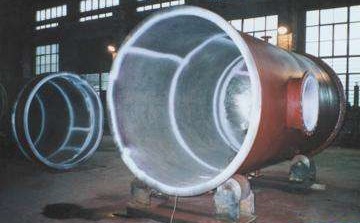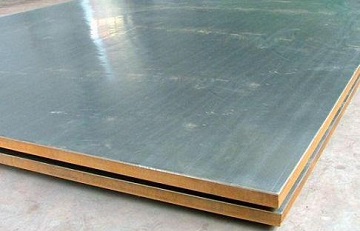The Difference Between Titanium Lining and Titanium Cladding
The commercially pure titanium and its alloys are extensively used for the fabrication of various piping components and equipment such as pressure vessels, tanks, heat exchangers, and tubing, etc. However, it is very costly to manufacture these products in 100% titanium. Titanium lining and titanium cladding techniques are developed to reduce the cost while remaining the corrosion resistance & high specific strength of titanium.

A pressure vessel lined with titanium Gr.2 sheet for urea synthesis tower.

Titanium clad steel plates.
In both processes, titanium materials makes up the surface which will be in contact with the corrosive medium while the carbon steel/ alloy steel base metal acts as the backing material. The titanium cladding refers to a variety of deformation and joining techniques to form metal-metal laminar composites. They are primarily produced by deformation bonding such as roll bonding and explosive bonding. The pressure exerted brings the surfaces of titanium and base metal into atom-to-atom contact. The two surfaces are metallurgically joined throughout all their contact areas. The titanium lining refers to a much more loose contact between titanium and the base metal material. For example, the titanium and base metal may be joined by brazing at several positions of the contact area or by loosely mechanical expansion joining. There is no atom-to-atom contact. The titanium cladding has significantly higher joining strength than that of titanium lining, thus, can be used at elevated temperatures and high pressures. Titanium lining are usually used for low pressure application at ambient temperature.
